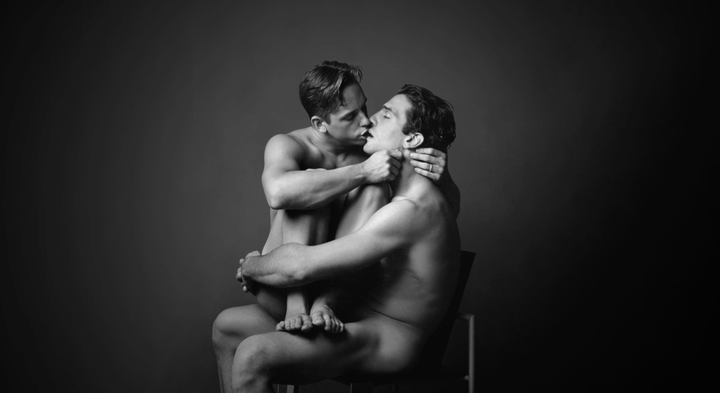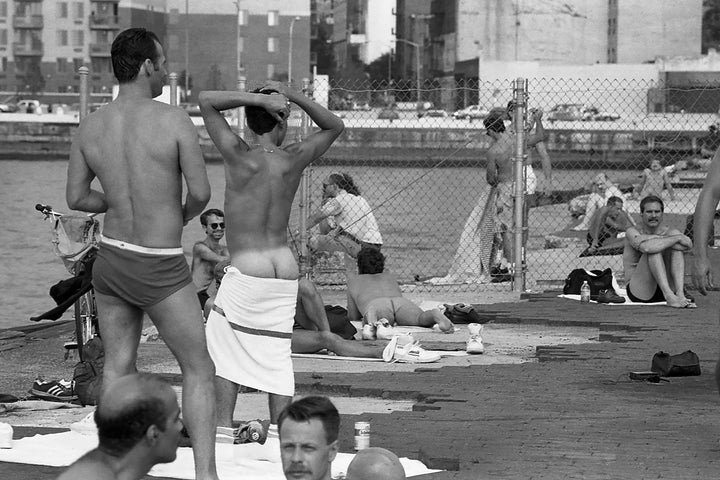An audio description version of the video above is available here.
Photographer Stanley Stellar has spent decades capturing gay life in New York City. He and his camera have been witness to the sexual awakening that took place on the piers on Manhattan’s West Side during the ’70s, the growing openness and expression of sexuality that has expanded far beyond his time spent on Christopher Street, the harrowing devastation of the AIDS crisis beginning in the early ’80s, and the LGBTQ community’s energy and passion as it continues to fight for equality today.
Through all of it, Stellar has created and curated a massive archive of queer history ― all thanks to his ability to connect with and capture people through his lens.
Now, he’s the one in front of the camera as the star of “Stanley Stellar: Here For This Reason,” the first film released in HuffPost and RYOT Films’ new documentary initiative “Short Stories.” (Watch it above.) The film debuted at the Tribeca Film Festival in March under the direction of Vice senior producer Eric Leven, who also wrote and produced the doc.
Leven, who has made sexual health and sexual communication a focus of his career, developed a friendship with Stellar a decade ago, when the photographer asked to take Leven’s photo during a game of double Dutch. It’s a moment that brought the friends, whose hanging out sessions typically involve, according to Leven, “shooting the shit,” full circle and evolved into this stunning 15-minute exploration of LGBTQ history.
“I love that 10 years ago a man approached me to take my picture, and then 10 years later I asked to take his,” Leven told HuffPost. What followed is not only a powerful look back at history, but also an emotional and thoughtful portrait of how far the queer community has come ― and how much more there is left to achieve.
Below, Leven discusses how the doc was created, why he felt so strongly about sharing this work with the world, and what he wants viewers to take away from the film.

How did you and Stanley meet?
I was working a lot within safer sex outreach and a lot of Act Up-like communities and different queer outreach groups. I do double Dutch as a hobby, and I really enjoy going down to the Christopher Street piers and doing it because you have a large population of LGBT youth of color. One day an older gentleman approached me and said, “You know, I’ve never seen anything like this ― you’re a white guy amongst all these young people of color,” and asked to take my picture. We would see each other at marches, rallies, protests, gay pride events ― Stanley was always there taking pictures. We would always start chatting and that evolved. I interviewed Stanley for my blog in 2006 at his house to get his perspective on the history of gay culture, and after that I enjoyed having what I called a “Tuesdays with Morrie” type of relationship ― we would have tea, hang out, sometimes get stoned, shoot the shit.
How did that evolve into creating a documentary together?
I knew he appreciated me as a younger person, which offered him insight into what was going on in the gay world at the time, but I leaned back on him in much the same way to give me insight on the history. Just going through his photos and being friends with him, asking story after story and getting that insight along with having the skill set to make videos and being a producer, having that be my career. It was me just being like, “I’ve got to put you in front of a camera, these stories are too good.” I didn’t really have anything beyond that ― I was just like I want to get this recorded.

His photos are incredible ― the sheer amount of them, the emotion behind them and their historical impact is remarkable.
I think that’s one of my favorite parts of the piece ― Stanley never set out years ago to be this kind of archivist or historian of our community by just being who he is and being someone who is willing to go out on the street and just snap photos with the community he was most familiar with. Now that we get to this later point of his life and career, his innocent picture snapping has become an archive for our history. Mostly I’m just so grateful that at a point in Stanley’s life at 73 in a world of digital media and fast paced media I can honor him and showcase his work when he was least expecting it.
Why do you feel so passionately about sharing this particular story?
I’ve always been a fighter. I moved to NYC in 2006 when I was 25 and desperately wanted to be part of that loud protest fight for something. I had come out at 19 and always befriended and trusted older people. My first gay mentors ― my first great gay influences ― were all predominately HIV positive, having come from the late ’80s and ’90s experience of being gay, so I inherited their rage and anger with regard to HIV/AIDS, and it became my mission and a strong part of my identity to continue the fight. I’m always trying to build my reel around LGBT work and work that means something to me, but also because Stanley has a focus on HIV/AIDS within the piece. That was the starting point.

That definitely comes through in the doc. What do you hope viewers take away from it?
That looking into our past is crucial for who we are today, and that we as gay people didn’t just arrive ― we’ve aways been here. The biggest thing is that for a community that up until this point did not have any sense of systematic archiving or history, that it was really up to us and our personal voices. Stanley inadvertently told our history by just being himself. He bears that responsibility because no one else is going to do it for us. The parallelism of the fight, of who we have to be, of how we have to stand out of the closet on our own to do the work.
I want this piece to remind all of us that we all came from the same place. Whether we were there or not, we all came from that Stonewall Riot. In this fight we still have a tremendous amount of work to do, but we need to hold together as a community to appreciate the differences we all have with one another and we need to realize we are all in this together. The symbolism of Stonewall is that we were all in that bar. We were all at Pulse Orlando. I just want this to be a commemoration for all of us. Stanley ends the piece with this really nice thing of going into the future, that we’re unique beings that deserve to be honored and that we don’t need to be a secret. That’s the takeaway ― that there’s a community here and despite what we’re each going though, our differences should be bringing us together.
Do you have a favorite photo in the piece?
Stanley is talking about how he’s seeing all these gay men he recognizes in the light for the first time ― he’s seen them all at night, but this is the first time he’s seeing them in the light. There’s an image of Stanley taking a picture, but you can see him in a motorcycle bike reflector, and that really resonated with me in the sense that here he is as a witness, doing his thing, creating history that is now more meaningful to us than it was in that moment. I guess that would be the Easter egg: the idea of paying attention to the voice you have now and how that might be impactful later and the insignificance of what we’re thinking we’re carrying through might be incredibly significant later on.
Watch “Stanley Stellar: Here For This Reason” above.
This interview has been edited and condensed for clarity.

